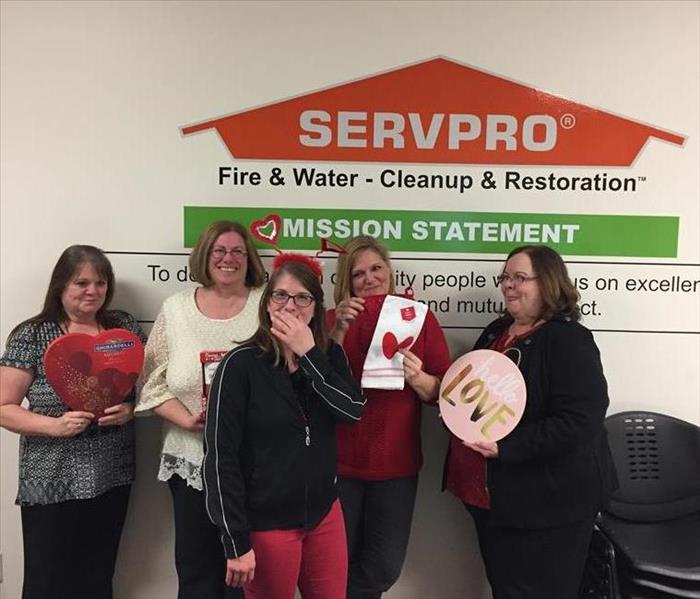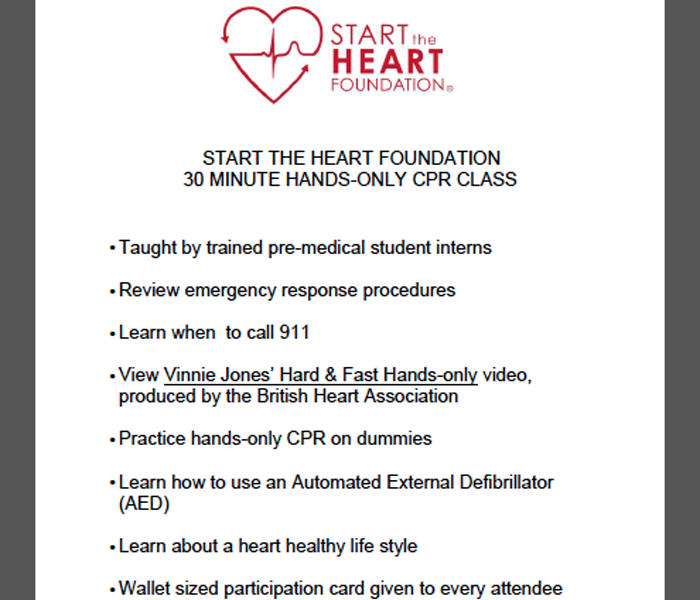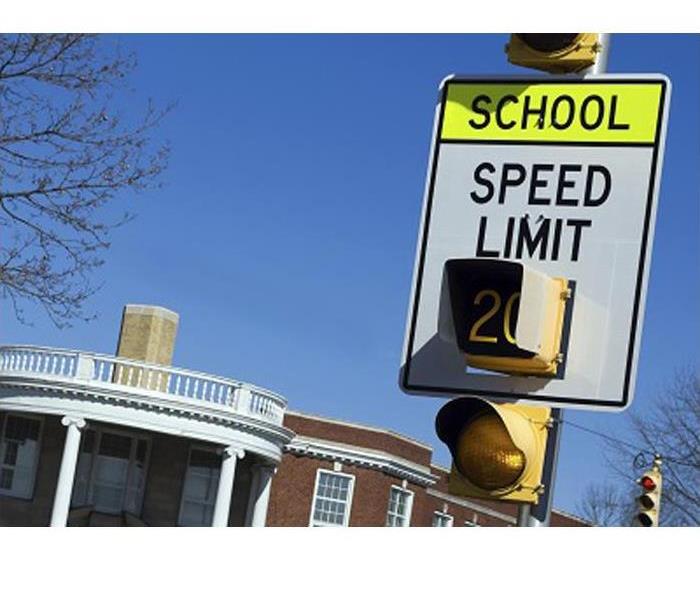Archived Community Blog Posts
Severe Weather Threatens – How to Stay Safe - update
8/8/2017 (Permalink)
Severe thunderstorms and flash flooding are possible from the Plains states to the Mid-Atlantic region and the American Red Cross has steps people should follow to stay safe during this severe weather.
HOW TO STAY SAFE
DOWNLOAD EMERGENCY APP People should download the free Red Cross Emergency App to receive emergency alerts and information about what to do in case of thunderstorms, flooding and other disasters, as well as locations of shelters. The App also includes emergency first aid information and a Family Safe feature which allows people to instantly see if loved ones are okay. The free Emergency App is available in app stores by searching for the American Red Cross or going to redcross.org/apps.
THUNDERSTORMS
- If you can hear thunder, you are close enough to the storm to be struck by lightning. Go to safe shelter immediately.
- As the storm approaches, take shelter in a building.
- If you are driving, pull off the roadway and park. Stay in the car with the windows closed and turn on the emergency flashers. Avoid touching metal or other surfaces at conduct electricity in and outside of the vehicle.
- If you are inside a home, unplug appliances and avoid using the telephone or any electrical appliances. Avoid taking a bath or shower, or running water for any other purpose.
- If you are caught outside and cannot reach a safe building, avoid high ground, water, or tall, isolated trees and metal objects such as fences or bleachers. Picnic shelters, dugouts and sheds are not safe.
FLOODING
- Be prepared to evacuate at a moment’s notice. When a flood or flash flood warning is issued for your area, head for higher ground and stay there.
- Stay away from floodwaters.
- Turn around, don’t drown. If you come upon a flooded road while driving, turn around and go another way. If you are caught on a flooded road and waters are rising rapidly around you, get out of the car quickly and move to higher ground. Most cars can be swept away by less than two feet of moving water.
- Keep children out of the water.
- Be especially cautious at night when it is harder to recognize flood danger.
About the American Red Cross:
The American Red Cross shelters, feeds and provides emotional support to victims of disasters; supplies about 40 percent of the nation's blood; teaches skills that save lives; provides international humanitarian aid; and supports military members and their families. The Red Cross is a not-for-profit organization that depends on volunteers and the generosity of the American public to perform its mission. For more information, please visit redcross.org or cruzrojaamericana.org, or visit us on Twitter at @RedCross.
National Safety Council article - Slow Down: Back to School Means Sharing the Road
8/8/2017 (Permalink)
School days bring congestion: Yellow school buses are picking up their charges, kids on bikes are hurrying to get to school before the bell rings, harried parents are trying to drop their kids off before work.
It's never more important for drivers to slow down and pay attention than when kids are present – especially before and after school.
If You're Dropping Off
Schools often have very specific drop-off procedures for the school year. Make sure you know them for the safety of all kids. More children are hit by cars near schools than at any other location, according to the National Safe Routes to School program. The following apply to all school zones:
- Don't double park; it blocks visibility for other children and vehicles
- Don't load or unload children across the street from the school
- Carpool to reduce the number of vehicles at the school
Sharing the Road with Young Pedestrians
According to research by the National Safety Council, most of the children who lose their lives in bus-related incidents are 4 to 7 years old, and they're walking. They are hit by the bus, or by a motorist illegally passing a stopped bus. A few precautions go a long way toward keeping children safe:
- Don't block the crosswalk when stopped at a red light or waiting to make a turn, forcing pedestrians to go around you; this could put them in the path of moving traffic
- In a school zone when flashers are blinking, stop and yield to pedestrians crossing the crosswalk or intersection
- Always stop for a school patrol officer or crossing guard holding up a stop sign
- Take extra care to look out for children in school zones, near playgrounds and parks, and in all residential areas
- Don't honk or rev your engine to scare a pedestrian, even if you have the right of way
- Never pass a vehicle stopped for pedestrians
- Always use extreme caution to avoid striking pedestrians wherever they may be, no matter who has the right of way
Sharing the Road with School Buses
If you're driving behind a bus, allow a greater following distance than if you were driving behind a car. It will give you more time to stop once the yellow lights start flashing. It is illegal in all 50 states to pass a school bus that is stopped to load or unload children.
- Never pass a bus from behind – or from either direction if you're on an undivided road – if it is stopped to load or unload children
- If the yellow or red lights are flashing and the stop arm is extended, traffic must stop
- The area 10 feet around a school bus is the most dangerous for children; stop far enough back to allow them space to safely enter and exit the bus
- Be alert; children often are unpredictable, and they tend to ignore hazards and take risks
Sharing the Road with Bicyclists
On most roads, bicyclists have the same rights and responsibilities as vehicles, but bikes can be hard to see. Children riding bikes create special problems for drivers because usually they are not able to properly determine traffic conditions. The most common cause of collision is a driver turning left in front of a bicyclist.
- When passing a bicyclist, proceed in the same direction slowly, and leave 3 feet between your car and the cyclist
- When turning left and a bicyclist is approaching in the opposite direction, wait for the rider to pass
- If you're turning right and a bicyclists is approaching from behind on the right, let the rider go through the intersection first, and always use your turn signals
- Watch for bike riders turning in front of you without looking or signaling; children especially have a tendency to do this
- Be extra vigilant in school zones and residential neighborhoods
- Watch for bikes coming from driveways or behind parked cars
- Check side mirrors before opening your door
By exercising a little extra care and caution, drivers and pedestrians can co-exist safely in school zones.
National Safety Council article
http://www.nsc.org/learn/safety-knowledge/Pages/back-to-school-safety-tips-for-drivers.aspx
Happy Valentine's Day Bunco
2/1/2017 (Permalink)
 Valentine Bunco Winners
Valentine Bunco Winners
Thank you to all of the ladies who came out to roll the dice at our by-monthly bunco! We LOVE you all and thank you for supporting SERVPRO of East Louisville. We wish all of you happiness on Valentine's Day!
If you'd like to join in the fun we host our bunco by-monthly the first Wednesday every other month. Please contact our office at 502-897-3608 for more information about our next event.
The event starts at 5pm at our office (1929 Production Drive, Louisville, KY 40299) with dinner. The first roll starts at 6pm. We usually play two rounds and are finished around 7pm. This is a great way to meet your peers in the industry and enjoy some good food on us!
BUNCO Event, Wednesday, August 3
7/14/2016 (Permalink)
 Start the Heart Foundation
Start the Heart Foundation
BUNCO EVENT
WEDNESDAY, AUGUST 3
We are excited to announce our next Bunco event will be fun and informative. We will provide a free Hands Only CPR class, thanks to the Start the Heart Foundation. Below is information about this foundation. I hope you all can attend. Please pass this along to your coworkers.
The first roll of the dice will start as soon as the demonstration is finished (as close to 6 as possible). The presentation will begin at 5:30 pm. Don't forget Bunco is hosted at our office: 1929 Production Drive, Louisville, KY 40299.
Please RSVP and let Megan know if you will or won't be attending by June 20th. Below is some information about sudden cardiac arrest and how we can potentially save someone’s life.
Hope to see you there!
Your SERVPRO of East Louisville Marketing Team
Start the Heart: Sudden cardiac arrest claims the lives of over 300,000 people per year in the United States. Would you know exactly what to do in the event someone near you collapsed and may not be breathing? Come to this short class and learn the simple skill of hands-only CPR (no mouth-to-mouth required) that will empower you to be prepared for this type of emergency. Bystander CPR can double or even triple a person's chance of survival. This class is for anyone who is willing to learn!






 24/7 Emergency Service
24/7 Emergency Service

